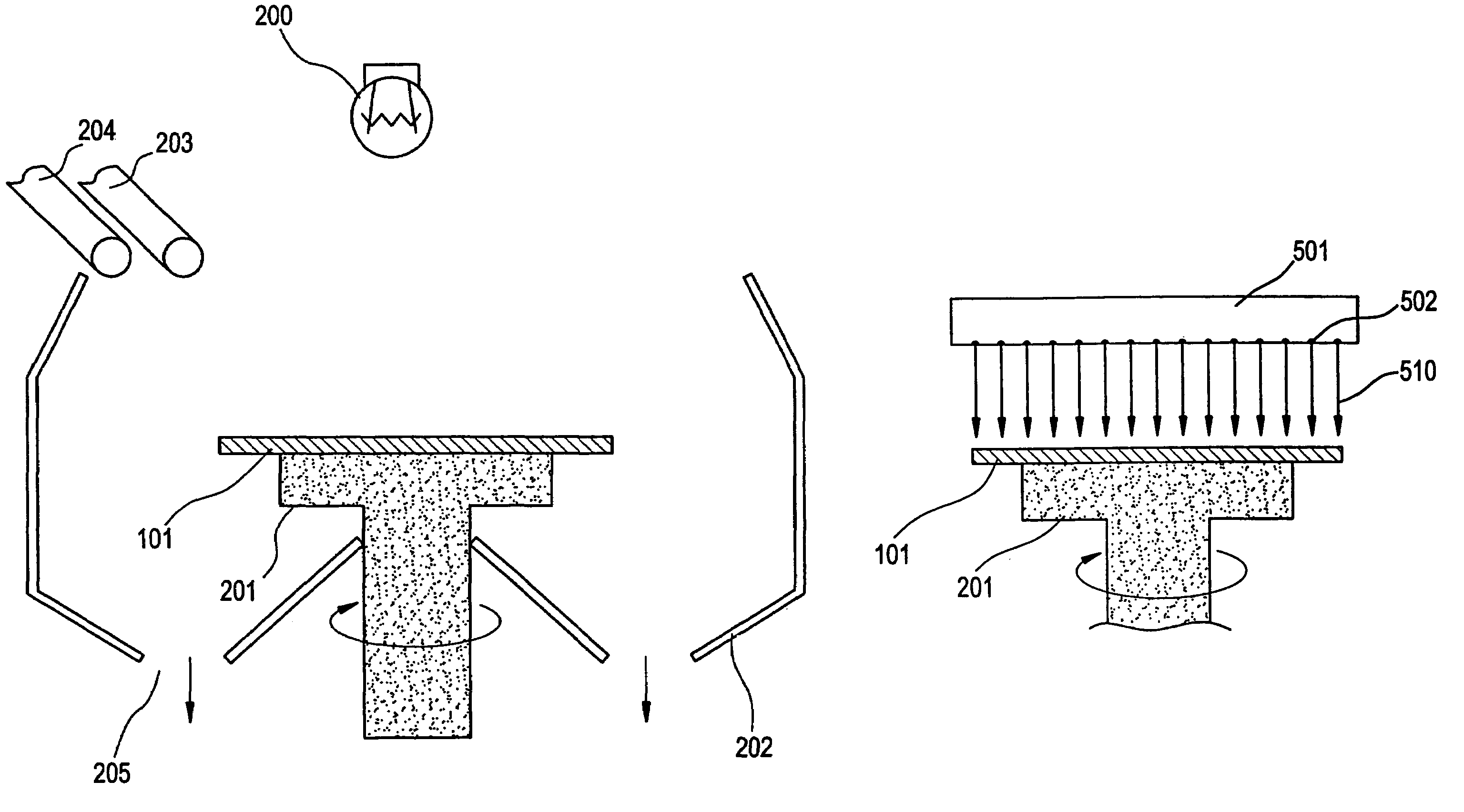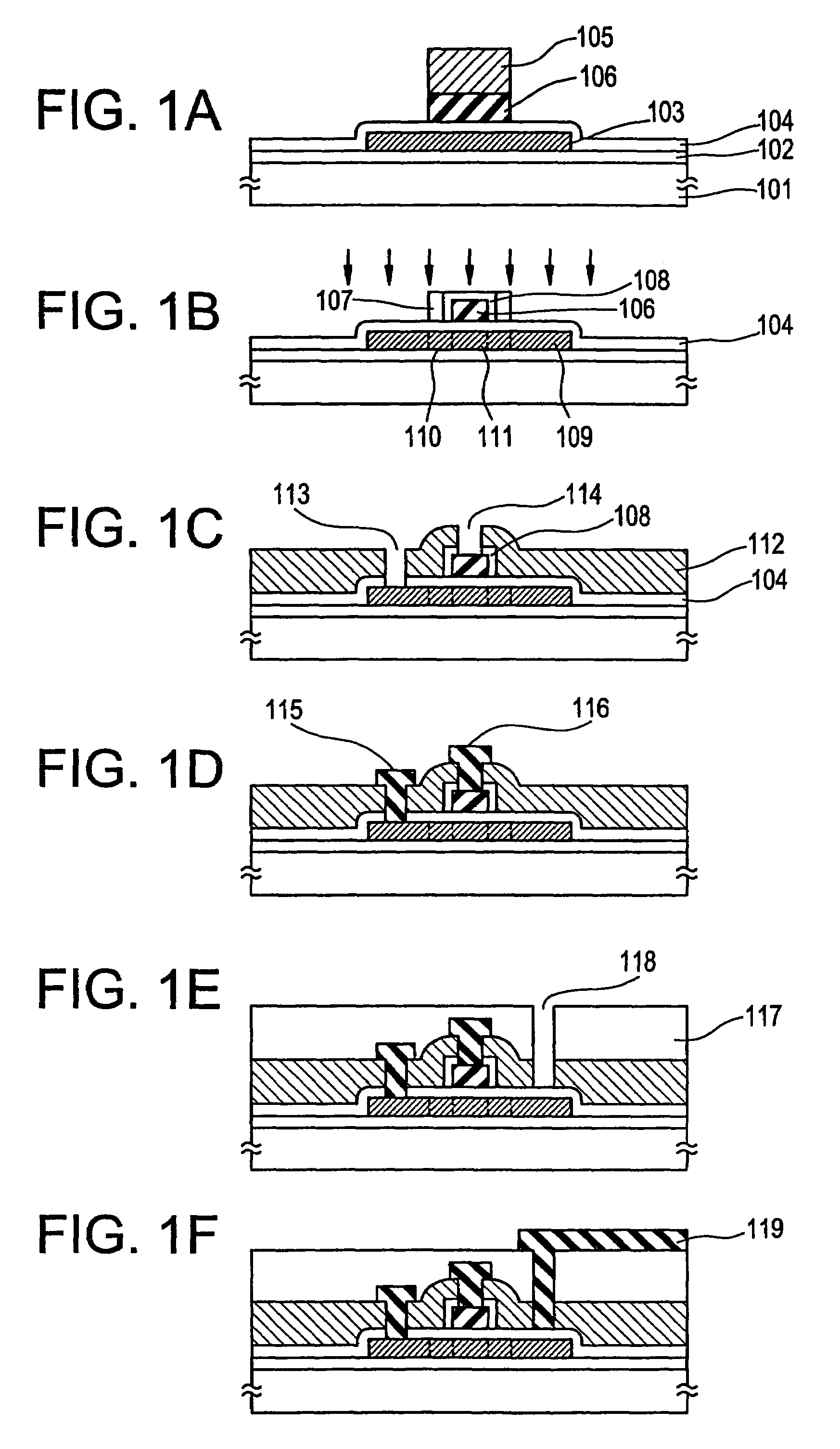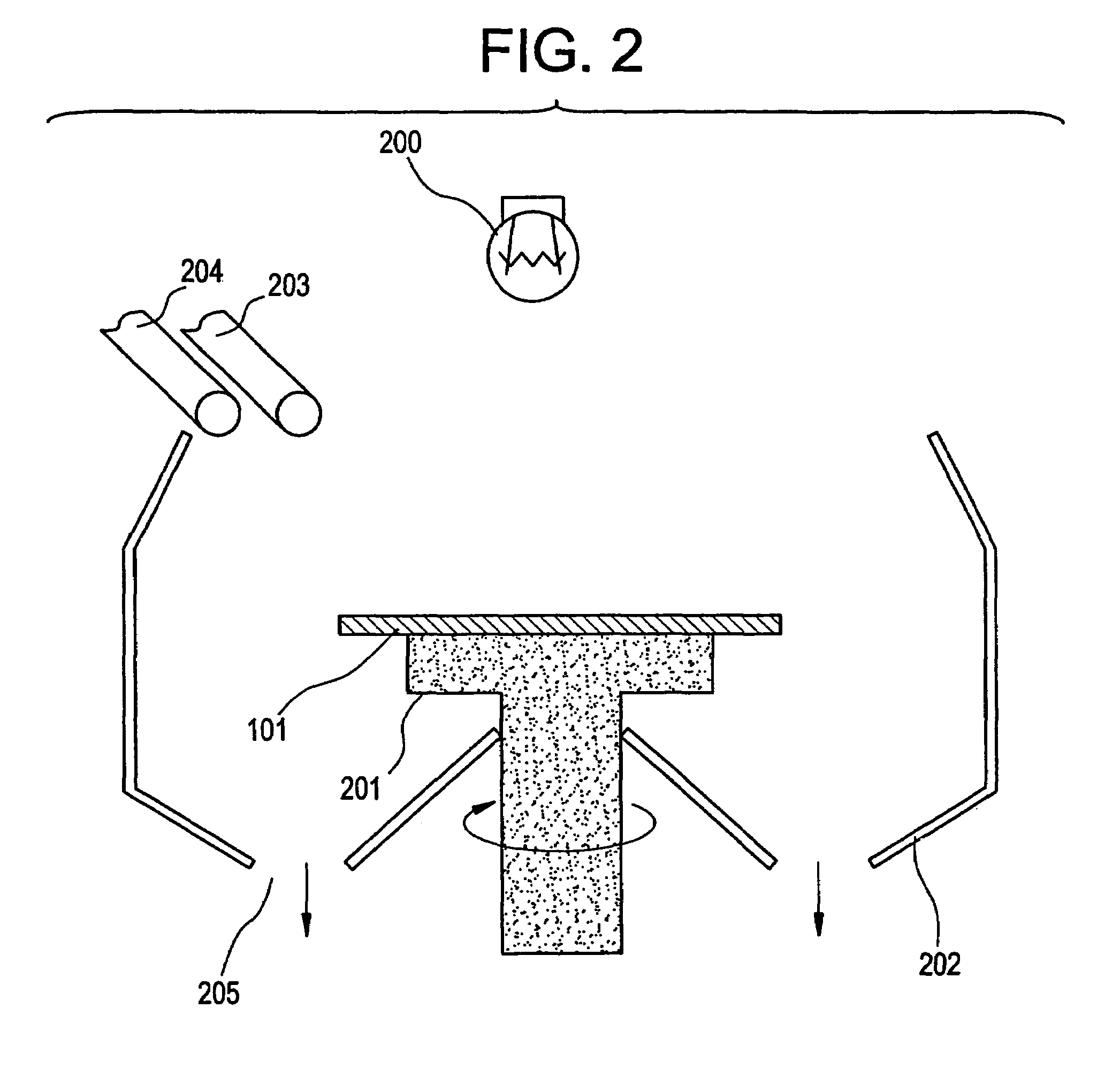Solution applying apparatus and method
a technology of solution and applying apparatus, which is applied in the direction of electrical equipment, basic electric elements, semiconductor/solid-state device manufacturing, etc., can solve the problems of unsatisfactory solution circulation, island-shaped etching irregularities over the entire surface of the substrate, and insufficient wet etching solution, etc., to achieve good solution circulation and good solution circulation
- Summary
- Abstract
- Description
- Claims
- Application Information
AI Technical Summary
Benefits of technology
Problems solved by technology
Method used
Image
Examples
embodiment 1
[0065]In the embodiment, a process in which ultraviolet light is irradiated is performed before the etching process in the manufacture of a P channel-type pixel thin film transistor (TFT) used in an active matrix type liquid crystal electro-optical device. FIGS. 1A to 1F show the forming processes of the P-channel type pixel TFT in the embodiment.
[0066]In FIG. 1A, a silicon oxide film is formed to a thickness of 3000 Å by sputtering as a base film 102 on a glass substrate 101 (Corning #7059, 100 mm×100 mm). An amorphous silicon film is then formed to a thickness of 500 Å by plasma CVD, and then crystallization is performed by the thermal annealing in a nitrogen atmosphere for 12 hours at 600° C. Further, laser annealing is performed to improve crystallization. The energy density of the laser is suitably 250 to 350 mJ / cm2, in the embodiment, 300 mJ / cm2.
[0067]An island-like silicon film 103 is formed by patterning the crystallized silicon film. The silicon film 103 forms the active la...
embodiment 2
[0096]The embodiment is an example of a spin etching system in which a spin etching apparatus and other apparatuses are provided integrally, as shown in FIG. 3. A robot arm 302 for moving the substrate 101 is provided at the center on a main body 301. A cassette 303 which houses a plurality of substrates 101, a substrate positioning (alignment) unit 304 and a spin etching apparatus 305 are provided such that they surround the robot arm 302. An ultraviolet light irradiating unit 304a such as a high pressure mercury lamp which irradiates ultraviolet light from the top is provided in the positioning unit 304, and therefore ultraviolet light can be irradiated at the same time as positioning is effected, and therefore the process is simplified.
[0097]In FIG. 3, a first nozzle which causes an etching solution to flow, and a second nozzle which causes pure water to flow for washing are provided in the spin etching apparatus 305, and thus washing, etching and drying (spin drying) can be perf...
embodiment 3
[0099]The embodiment is an example of processes in which ozone water is brought into contact with the resist prior to the etching process, and in which a P channel-type pixel TFT, as used in an active matrix type liquid crystal electro-optical device, is formed. The manufacturing process for the P-channel type pixel TFT of the embodiment is shown in FIGS. 1A to 1F.
[0100]In FIG. 1A, a silicon oxide film is formed to a thickness of 3000 Å by sputtering as a base film 102 on a glass substrate 101 (Corning #7059, 100 mm×100 mm). An amorphous silicon film is then formed to a thickness of 500 Å by plasma CVD, and then which crystallization is performed by the thermal annealing in a nitrogen atmosphere for 12 hours at 600° C. Further, laser annealing is performed to improve crystallization. The energy density of the laser is suitably 250 to 350 mJ / cm2, in the embodiment 300 mJ / cm2.
[0101]An island-like silicon film 103 is formed by patterning the crystalline silicon film formed in this way....
PUM
 Login to view more
Login to view more Abstract
Description
Claims
Application Information
 Login to view more
Login to view more - R&D Engineer
- R&D Manager
- IP Professional
- Industry Leading Data Capabilities
- Powerful AI technology
- Patent DNA Extraction
Browse by: Latest US Patents, China's latest patents, Technical Efficacy Thesaurus, Application Domain, Technology Topic.
© 2024 PatSnap. All rights reserved.Legal|Privacy policy|Modern Slavery Act Transparency Statement|Sitemap



